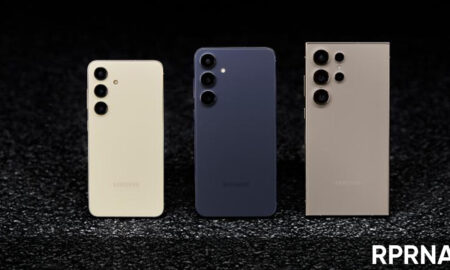Search results for "Europe"
-

 412Phones
412PhonesSamsung Galaxy Z Flip 6 and Z Fold 6 price leaked for Europe
Key Points Samsung Galaxy Z Fold 6 price will start at €2200 in Europe. The foldable cost shows a hike as compared...
-

 360Phones
360PhonesNew leak talks about Samsung Galaxy Z Flip 6 European price
Key Points Samsung Galaxy Z Flip 6 European price got leaked. Galaxy Z Flip 6 256GB model will cost €1,339.99 in Europe....
-

 622Wearables
622WearablesSamsung Galaxy Watch7, Watch Ultra, and Buds 3 European prices and colors revealed
Key Points European prices of upcoming smartwatches and buds are out now. Galaxy Watch 7 will come in Green, Silver, and Cream...
-

 571Updates
571UpdatesJune 2024 update for Galaxy S23 series reaches India and Europe
Key Points June 2024 update for Galaxy S23 series live in India and Europe. This latest patch enhances security and stability of...
-

 518Updates
518UpdatesSamsung Galaxy Note 20 series getting June 2024 update in Europe and the US
Key Points June 2024 update live for carrier-locked Galaxy Note 20 units in the US. Galaxy Note 20 and Note 20 Ultra...
-

 407Updates
407Updates4 Samsung foldable phones receiving June 2024 update in Europe
Key Points June 2024 update live for Galaxy Z Fold 5, Fold 4, Fold 3, and Flip 3 in Europe. This latest...
-

 492Updates
492UpdatesSamsung Galaxy S24 Series June 2024 update live in Europe
Key Points June 2024 update for Galaxy S24 Series reaches Europe. The patch is already live in South Korea and the US....
-

 540Updates
540UpdatesSamsung Galaxy S24 and S23 series grips second May 2024 update in Europe
Key Points Galaxy S24 and Galaxy S23 series receiving a second May 2024 update. The June 2024 patch rollout has also begun...
-

 475Updates
475UpdatesOne UI 6.1 update for Galaxy A52s rolling out in Europe
Key Points Samsung released One UI 6.1 update for Galaxy A52s in Europe. Samsung launched Galaxy A52s in 2021 pre-installed with Android...
-

 556Updates
556UpdatesSamsung Galaxy A33 5G collects One UI 6.1 update in Europe
Key Points Galaxy A33 5G users collecting One UI 6.1 update in Europe. The update brings significant features and improvements. The update...
